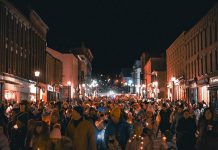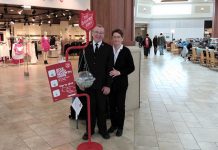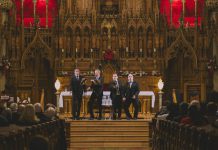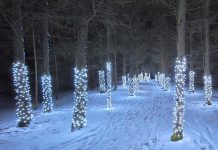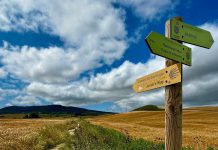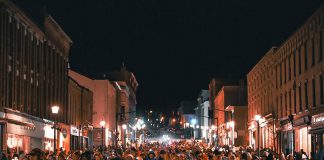
The winter solstice arrives on December 21st and you can celebrate the return of the light with a new event taking place Wednesday night in downtown Peterborough.
On the winter solstice, the Earth’s northern hemisphere is tilted the furthest away from the sun, resulting in the longest night and shortest day of the year.
Because the axis of Earth is tilted by 23.5 degrees, the orientation of the northern and southern hemispheres changes as the Earth orbits the Sun, resulting in the change of seasons.
Although the winter solstice happens at the same moment for everyone around the world (5:44 a.m. EST), the length of the night depends on your location between the equator and the north pole. At the equator, there’ll be 12 hours of darkness. In the Kawarthas, we’ll get 15 hours and 9 minutes of darkness. At the Arctic circle, there’ll be a full 24 hours of darkness.

After the winter solstice, the northern hemisphere begins to tilt more towards the sun. On the summer solstice (Wednesday, June 21, 2017), the northern hemisphere will be tilted the closest to the sun, resulting in the longest day and shortest night of the year. In the Kawarthas, that means we’ll get 15 hours and 32 minutes of daylight.
Humans have been tracking the annual progress of the sun for thousands of years. Ancient peoples noticed regular patterns in the sun’s path across the sky, the amount of daylight and night, and the changing location of the sunrise and sunset. Monuments like Stonehenge in England and Machu Picchu in Peru were built for this purpose.
Pagan cultures in the northern hemisphere marked the winter solstice as the final day before the long winter by holding feast celebrations. Animals were slaughtered so they would not have to be fed during the winter, and wine and beer that was fermented during the year was ready for drinking.
Many of the traditions we now associate with Christmas have their roots in winter solstice celebrations. For example, the Celtic Druids used evergreen trees, holly, and mistletoe during winter solstice rituals.
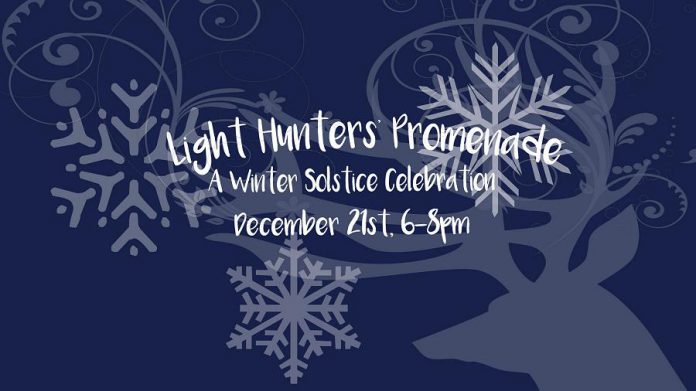
If you want to celebrate the winter solstice in Peterborough, you can join a group of local artists for the “Light Hunters’ Promenade”, a new annual tradition of a celebratory parade carrying lit lanterns through downtown Peterborough.
On the evening of Wednesday, December 21st, parade-goers with paper lanterns, drummers, circus performers, and a host of light seekers will gather at the courtyard of Peterborough Square (340 George St. North, Peterborough), proceed north on Water Street, west on Hunter Street to Fleming Park, then east again on Hunter Street and south on George Street, returning to Peterborough Square.
The event runs from 6 to 8 p.m. and is free to the public (although a suggested donation of $10 per family will be gratefully accepted). If you want to join in, you can bring your own lantern or come to Peterborough Square at 5 p.m. to buy a lantern.
The Light Hunters’ Promenade is being organized by Laurel Paluck of Atelier Ludmila, and participating artists include members of Old Men Dancing, Peterborough Academy for Circus Arts, as well as other local performers and puppeteers.
For more information, visit the Facebook event page or email lighthuntersptbo@gmail.com.
Interesting facts about the winter solstice
- The word solstice comes from the Latin word solstitium, which means “stationary sun”.
- The shadow you cast at noon on the winter solstice is the longest shadow you’ll cast all year.
- The Christmas carol In The Bleak Midwinter refers to the winter solstice in its title.
- Every year revellers gather at Stonehenge to watch the sunrise on the shortest day.
- The winter solstice happens on a different date each year (between December 21 and 23) because the Earth’s orbit around the sun is actually 365 days, five hours and 45 seconds long.


